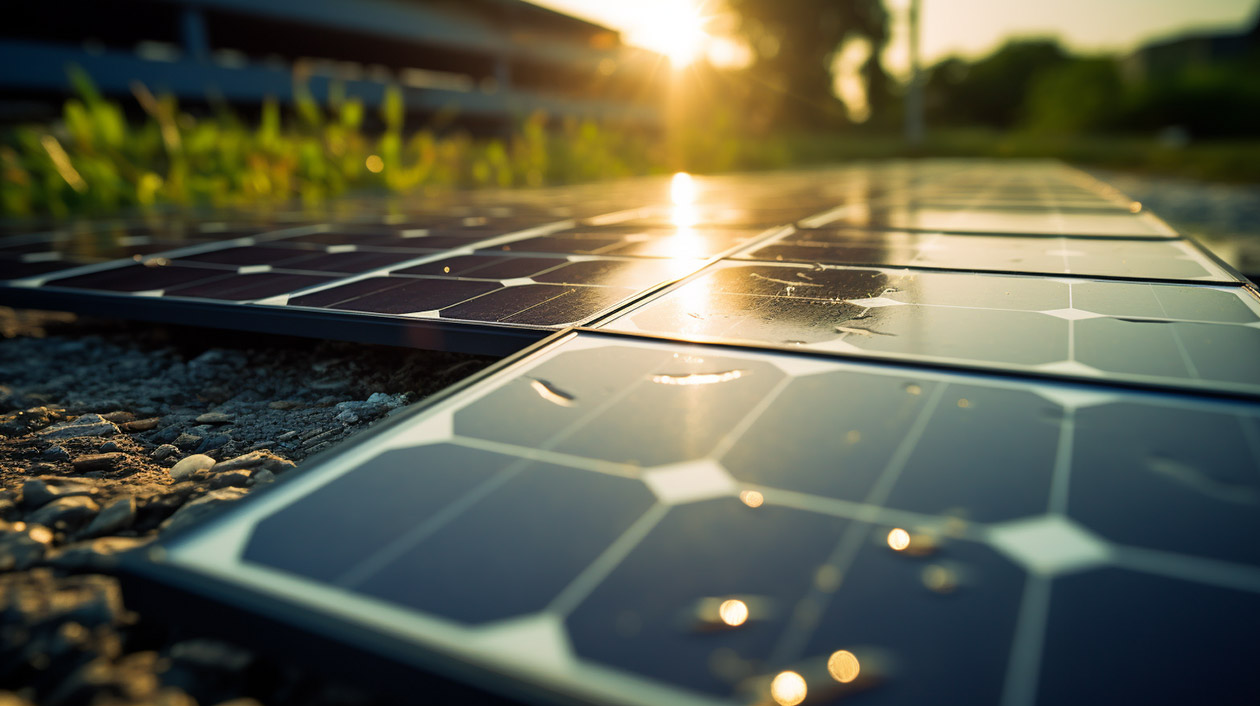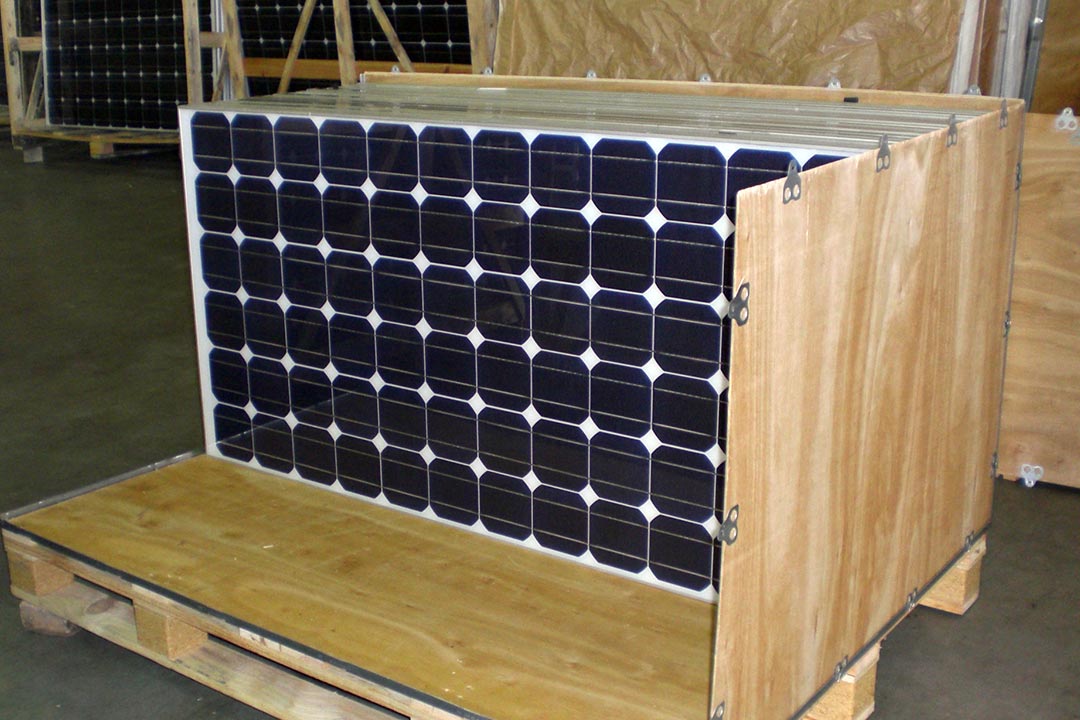What is the True Carbon Footprint of Solar Panels?

Solar panels have become synonymous with sustainable energy and a cleaner future. As the world moves towards renewable sources of power, it’s crucial to understand the true carbon footprint of solar panels. These incredible devices harness the power of the sun to generate electricity, making them an essential component of green energy solutions.
Why is the carbon footprint of solar panels important?
While solar panels are undoubtedly cleaner and greener than conventional energy sources, it’s essential to understand their true carbon footprint. Analyzing the complete environmental impact throughout the lifecycle of solar panels enables us to make informed decisions and further improve sustainability efforts.
By assessing factors like raw material extraction, manufacturing processes, transportation, installation, maintenance, and end-of-life management, we can gain insights into the carbon emissions associated with solar panels. This understanding allows us to optimize their production, usage, and disposal, reducing their environmental impact even further.
Therefore, it is imperative to delve into the depths of a solar panel’s carbon footprint, promoting continuous innovation, and ensuring that these renewable energy sources align with our objective of a cleaner and greener planet.
Manufacturing
If you have a small home solar system, it’s good to have a full check-up every two years, depending on the environmental conditions of your area. But if you have a big commercial system (more than 40kW), it’s best to have it checked every year to make sure everything is working well and safely.
Using a solar panel monitoring system is really important. It helps you keep an eye on how well your system is working, find any problems quickly, and figure out if you need to do something before your next planned check-up.
What materials are used in solar panels?
The primary materials used in solar panels include:
- silicon,
- metals like silver and aluminium
- glass
The extraction and processing of these materials have environmental implications, including greenhouse gas emissions.
Manufacturing solar panels involves various production methods, raw materials, and energy inputs that directly influence their carbon footprint. The type of production method employed, such as crystalline silicon or thin-film, significantly impacts the environmental impact of the panels.
The choice of raw materials used in the manufacturing process is another crucial factor. For instance, the production of silicon-based solar panels requires large amounts of energy, water, and chemicals. The extraction and processing of raw materials like silicon and silver contribute to greenhouse gas emissions and other environmental issues.
Additionally, energy inputs play a significant role in determining the carbon footprint of solar panels. The energy used during the manufacturing process, including electricity and fossil fuels, affects the overall environmental impact.
What is the environmental impact of manufacturing solar panels?
Manufacturing processes for solar panels can vary significantly, resulting in differing levels of carbon emissions. As mentioned earlier, the production of crystalline silicon panels involves energy-intensive manufacturing processes, leading to higher carbon emissions compared to thin-film panels.
Furthermore, advancements in manufacturing technologies are continuously reducing the carbon footprint of solar panels. By optimizing production processes and using more sustainable materials, manufacturers strive to minimize the environmental impact during manufacturing.
How has the carbon footprint of solar panel manufacturing changed over time?
Over the years, technological advancements and process optimizations have significantly influenced the reduction of the carbon footprint in solar panel manufacturing. Innovations have led to more efficient material usage, with transitions from multi-crystalline silicon to mono-crystalline silicon and then to thin-film technologies, making the manufacturing process less energy-intensive. Additionally, a gradual shift from fossil fuel-derived energy to renewable energy in manufacturing facilities has notably reduced carbon emissions associated with production. The introduction of recycling practices, more efficient supply chain management, and automation have further optimized manufacturing processes, reducing energy consumption and waste.
On a broader scale, policy and regulatory frameworks, alongside increased public awareness and corporate responsibility, have steered the industry towards more sustainable practices. Stricter emission regulations, incentives for green manufacturing, and a heightened consumer demand for sustainably produced solar panels have pushed manufacturers to adopt cleaner practices. Investments in research and development, coupled with collaborative efforts among academia, industry, and governments, have accelerated innovations aimed at reducing the carbon footprint of solar panel manufacturing. These multi-dimensional efforts underline the industry’s commitment to continuously reducing environmental impact, setting a positive trajectory for further carbon footprint reduction in solar panel manufacturing.
Did you know? According to Stylos, N., & Koroneos, C. (2014). Carbon footprint of polycrystalline photovoltaic systems. Journal of Cleaner Production, 64, 639-645, Further technological improvements in PV module production and in the manufacture of Balance-of-System components, as well as extended use of renewable energy resources as primary energy resources, could make the Carbon Footprint of PV systems even smaller.
Transportation
How are solar panels transported from the factory to the installation site?
Solar panels are transported from manufacturing facilities to installation sites via road, rail, or sea. Each of these transportation modes has associated carbon emissions.
What is the environmental impact of transporting solar panels?
The transportation phase significantly contributes to the carbon footprint of solar panels, encompassing the movement of raw materials to manufacturing facilities and the distribution of finished panels. Predominantly, transportation relies on fossil fuel-powered vehicles, leading to carbon emissions and other pollutants detrimental to air quality and human health.
Additionally, energy consumed in transportation, especially over long distances, inefficient logistic practices, and the production and disposal of packaging materials further add to the environmental impact.
How can the carbon footprint of solar panel transportation be reduced?
Opportunities like transitioning to low-emission vehicles, logistic optimization, and local production where feasible present avenues to significantly reduce the carbon footprint associated with transportation, making solar energy a more environmentally friendly alternative. Through these measures, the solar panel industry can further align with the overarching goal of transitioning to a sustainable and low-carbon energy future.

Installation
What is the environmental impact of installing solar panels?
The installation process requires equipment and often heavy machinery, which consume energy and may produce emissions. Moreover, additional materials used in installation can also contribute to the carbon footprint.
How can the carbon footprint of solar panel installation be reduced?
Efficient installation practices, recycling, and reusing materials, and utilizing low-emission equipment can help in reducing the carbon footprint of solar panel installation.
Operation
How long do solar panels last?
Solar panels have a long operational life, often between 25 to 30 years. Their longevity is a significant advantage in reducing the overall carbon footprint per unit of electricity generated.
What is the environmental impact of operating solar panels?
Operating solar panels is where the environmental benefits of this technology are most apparent, as they generate clean, renewable electricity, reducing reliance on fossil-fuel based power sources and thereby decreasing greenhouse gas emissions. Once installed, solar panels operate without emitting pollutants, positioning them as a crucial solution for combating climate change. The longevity of solar panels, often spanning 25 to 30 years, ensures a prolonged period of clean energy generation, which significantly outweighs the environmental impacts incurred during their manufacturing, transportation, and installation stages.
However, there are some operational aspects to consider. The efficiency of solar panels can decline over time, which may slightly reduce the amount of electricity they can generate. Furthermore, some maintenance activities, like cleaning, may require water and other resources, although the impact is relatively minor. Additionally, depending on the region, there could be environmental impacts related to land use and habitat disruption, especially for large solar farms. Despite these considerations, the operation phase of solar panels represents a substantial net positive in terms of environmental impact, marking a significant stride towards a cleaner, more sustainable energy system.
How can the carbon footprint of solar panel operation be reduced?
Reducing the operational footprint of solar panels largely revolves around enhancing their efficiency and longevity, alongside minimizing resource usage during maintenance activities. Advancements in photovoltaic technology, such as the development of bifacial solar panels that capture sunlight on both sides, or the use of tracking systems that follow the sun’s trajectory, have shown promise in maximizing energy generation. Additionally, proactive maintenance, including regular cleaning and timely repairs, ensures that the panels operate at optimal efficiency throughout their lifespan. Employing water-efficient cleaning methods or rainwater harvesting for maintenance activities can further minimize the operational footprint. The integration of smart monitoring systems can also provide real-time data on the performance of solar panels, enabling prompt identification and rectification of issues, thus maintaining high operational efficiency.
On a broader scale, effective land use and habitat management strategies are crucial in reducing the operational footprint of large solar farms. Implementing agrophotovoltaic systems, where solar panels are installed above agricultural lands or pastures, can promote dual land use, reducing land acquisition and habitat disruption. Similarly, deploying solar panels on already developed or disturbed lands, like brownfields or landfills, or utilizing rooftops and parking lots for solar installations, can significantly mitigate land use impacts. These measures collectively contribute to minimizing the operational footprint, ensuring that solar energy remains a sustainable and environmentally favourable choice in the transition towards a green energy future.
Energy Payback Time of Solar Panels
Understanding the energy payback time of solar panels is crucial in assessing their true carbon footprint.
The energy payback time refers to the duration it takes for a solar panel system to generate the same amount of energy that was used during its manufacturing and installation process. It is a critical factor in determining the environmental benefits of solar panels.
One of the key advantages of solar panels is their ability to offset carbon emissions through the generation of clean, renewable energy. By producing electricity from sunlight, solar panels reduce the reliance on fossil fuels and contribute to a greener energy mix.
The energy payback time plays a pivotal role in analyzing the true carbon footprint of solar panels. A shorter payback time means that the carbon emissions associated with manufacturing and installation are offset relatively quickly, resulting in a more significant reduction in greenhouse gas emissions over the lifetime of the system.
Solar Panels, Energy, and Australia
Australia, with its abundant sunshine, vast open spaces, and extensive coastline, has immense potential for harnessing solar energy. Solar panels play a crucial role in Australia’s energy sector, offering a sustainable and environmentally friendly solution.
In recent years, solar panels have gained significant importance in Australia’s energy sector. The country has abundant solar resources, making it an ideal location for solar energy generation. Solar panels enable the conversion of sunlight into electricity, providing a clean and renewable energy source for residential, commercial, and industrial purposes.
Solar panels have the potential to make a substantial impact on reducing Australia’s carbon footprint. By generating electricity from renewable energy sources, solar panels help reduce the reliance on fossil fuels such as coal and natural gas, which are major contributors to greenhouse gas emissions. By switching to solar energy, Australia can significantly decrease its carbon emissions and mitigate the effects of climate change.
Australia has witnessed remarkable growth in solar panel installations across the country. Many residential, commercial, and industrial buildings have adopted solar panels as a viable means to meet their energy demands. In addition, large-scale solar farms have been established, contributing to the overall energy mix and reducing reliance on traditional non-renewable sources.
For instance, the Greenough River Solar Farm in Western Australia is one of the largest solar farms in the southern hemisphere. It has a capacity of 10 megawatts and produces clean energy to power around 3,000 homes. This project showcases the successful implementation of solar panels on a large scale and the positive impact it has on the environment.

